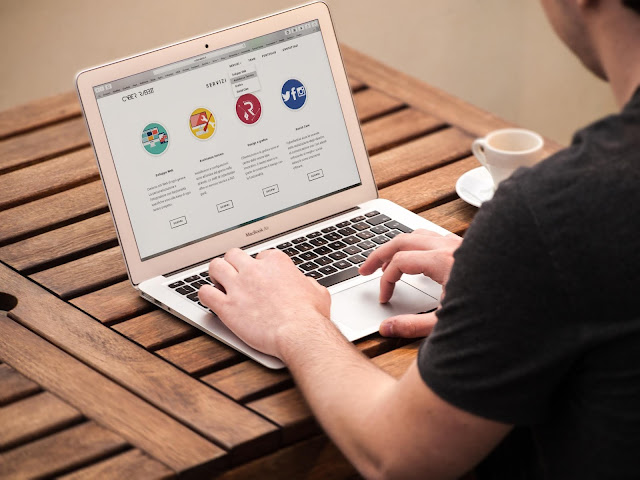10 Website Mistakes to Avoid – Small Business Tips
A bad website can be detrimental to your business so you’ll want to avoid as many website mistakes as you can. 75% of consumers admit that they will judge a business’s credibility based on how good their website design is. For the most part, you will only have about 15 seconds to gain a visitor’s attention before they leave, so you’ll want to make sure that you leave the best first impression possible.
We’ve compiled 10 mistakes for you to avoid when putting your website together:
1. Out-of-date business information
If you make the mistake of not keeping your business information up-to-date on your website then you could miss out on a lot of potential visitors and customers. Not having contact information at all can hurt your rankings on search engines, but having contact information that matches your whois information can actually give your search rankings a boost.
When customers look at you contact/business information they expect it to be correct and if they contact an email address that is no longer in use or call a number that no longer belongs to your business, or even go to an address that your business no longer occupies, they are going to get frustrated and most likely not use your services or visit your website again. Avoid the mistake of using out-of-date business information and your visitors will thank you for it.
2. Too much text
A giant wall of text can scare readers away. Most people on the Internet want their answers fast and they don’t want to have to search through long paragraphs to get them. That’s not to say you can’t have in-depth articles, but you need to break up the text with smaller paragraphs, headlines, and images where applicable.
You can use various applications or websites to help keep your copy clean and to the point. One app you might want to try is the HemingwayApp, which will let you know if a sentence is too long or complicated, if something could be said more simply, and other tips to perfect your content for easy reading.
3. Bad images
Having bad images or poor product photography on your website can be a huge mistake and cost you visitors, customers, and overall search ranking. Images can be very beneficial to your website, but they can also cause a lot of problems.
If you don’t optimize your images and resize them they can cause your website to slow down and lower your search ranking. If you use poor quality images you can scare visitors away in an instant. What do bad images look like? Blurry pictures, bad lighting, or the majority of photos that people use for products on eBay or Kijiji.
If this sounds anything like the images on your website, don’t worry, we’ve made an extensive guide on making the perfect product photos for your website. Another thing you’ll want to consider is optimizing your images. Make sure that the photos on your website are not gigantic.
You can resize large images using a photo editor like Photoshop or an online source like
picresize.com. Also, name your images something relevant, like “dog-tea-party.png” instead of “image132.png” as search engines actually take into account the name of pictures when ranking your website.
If you are unable to take your own photos for your website there are plenty of places you can find online that have professional stock photos for your use. Take a look at Creative Market, Envato, iStock, or run your own search to find the perfect photos for your website. You’ll want to avoid bad images on your website at all costs if you want to see consistent viewership on your website.
4. Being too “salesy”
Aggressive salespeople can often ruin the shopping experience and push possible customers away. Well, that same effect can happen on your website if you are consistently pushing your products on visitors. That’s not to say, don’t advertise at all on your website, but you should have content that is informative or interesting and isn’t just a sales pitch for your products.
Post content like tutorials, help articles, or other pieces that you know readers in your industry would find interesting/helpful. The more valuable content you have that visitors want to read, the more accepting they will be of your sales pitches.
5. Slow load times
Just under half of the people on the Internet expect a website to load in 2 seconds or less and are ready to leave a website if it takes any longer. Patience is not something you can expect of users on the Internet, so you better do what you can to speed up your website. We already discussed resizing images earlier, some other things you’ll want to do is take advantage of CDNs (Content Delivery Networks), remove unnecessary plugins, and use browser caching.
If you want more in-depth information about how to speed up your website you can check out this HostPapa Article that details many tips and tricks to speed up your website along with the tips listed above. A slow website is a guaranteed way to lose visitors, and ruin your search engine rankings, so make sure to avoid this mistake on your website.
6. No call to action
I know, I know, “Didn’t you just say not to be too salesly”? Yes, and I stand by that, but a call to action doesn’t necessarily have to be about selling a product to people. A call to action is all about bringing people back to your website.
Somewhere in your content, preferably at the end, you should have something that people can press or fill out so that they can be alerted when you publish new content. This can be anything from a follow button on a social media platform, to a subscribe button for a mailing list, and yes, even a link to a product that could help out the reader (but try not to do this too often or be too pushy with the pitch). Try not to use pop-ups that appear when a reader is in the middle of an article as these can be annoying and spammy.
7. Posting non-relevant content
Internet users can be some of the most skittish audiences around. If you post something that somebody doesn’t like or isn’t interested in, they might stop coming to your website. Don’t be scared of losing some readers, as this is just a way of life in the online world. The important thing is to create content that will bring more visitors to your website.
Just because there is an interesting piece of breaking news doesn’t mean that it is appropriate to post on your website. If your website is focused on a certain industry, make sure your content revolves around that industry, this will also be great for improving your search engine rankings. If you feel like branching out into another industry, think about creating a brother/sister website where you can post the content for that industry. This way you’ll avoid the mistake of posting non-relevant content on your website.
You can check out this HostPapa article for more tips to improve the content on your website.
8. Not marketing your content
Having the most impressive piece of content is useless if nobody sees it. When you have something new on your website, whether it be products, articles, news, you’ll want to make sure that people know about it. One of the best ways you can do this is through social media. In the United States alone, 78% of people have a social media account, which gives you a large audience for you to market to. For more information on marketing on social media check out these articles on Instagram and Snapchat.
You should also use some online tools like Google Analytics or HubSpot to help you figure out what keywords and content will get the most hits on search engines. Once you start to market your content you will notice a big change in the number of visitors, customers, and readers that come to your website.
9. Inconsistency in website design
The design of your website is how people will initially judge the credibility of your website. If you have an amateur look people aren’t going to take you seriously and if your website design is, well, bad, then people are probably not going to trust your website and will look for what they want elsewhere. Bad website design can actually hurt your SEO and your overall rankings in search engines.
You will also want to make sure that your website has responsive web design. This means that your website should respond and adapt to whatever platform or device a visitor is using. Whether somebody is on ios or Windows, mobile or desktop, visitors should have no problem loading or viewing your website.
Luckily there are plenty of good online website builders available that come at affordable prices and sometimes even free. Most web hosts, including HostPapa, offer a website builder with their hosting plans, or you can do a simple search and pick a website builder that fits your needs. The next step is to pick a theme and stick to it throughout all of your web pages on your website. Consistency and good design are both key when you are building your website.
Take a look at this HostPapa article about finding the best WordPress themes so you can ensure that your website looks amazing.
10. No social media integration
Not giving users the opportunity to use their favorite social media platforms to share your content and products is a big mistake many companies make on their websites. Whether you have a news website, eCommerce shop, or any other kind of website, you should always have an option to share your content.
Adding the ability to share via social media is easy. Most website builders already come with the ability to integrate your social media into your website, others, like WordPress, have widgets and plugins that you can use to add this feature. Take a look at which social media platforms you would like your customers to share your work on and those to your web pages accordingly.
Mistakes are a part of life, what is important is avoiding them where you can and fixing them when they happen. Take a long look at your website and make sure there aren’t any obvious blemishes that could deter anyone from staying and exploring your website. With a website that is built well and filled with good content, you are sure to not only have visitors stay but also return to your website.

